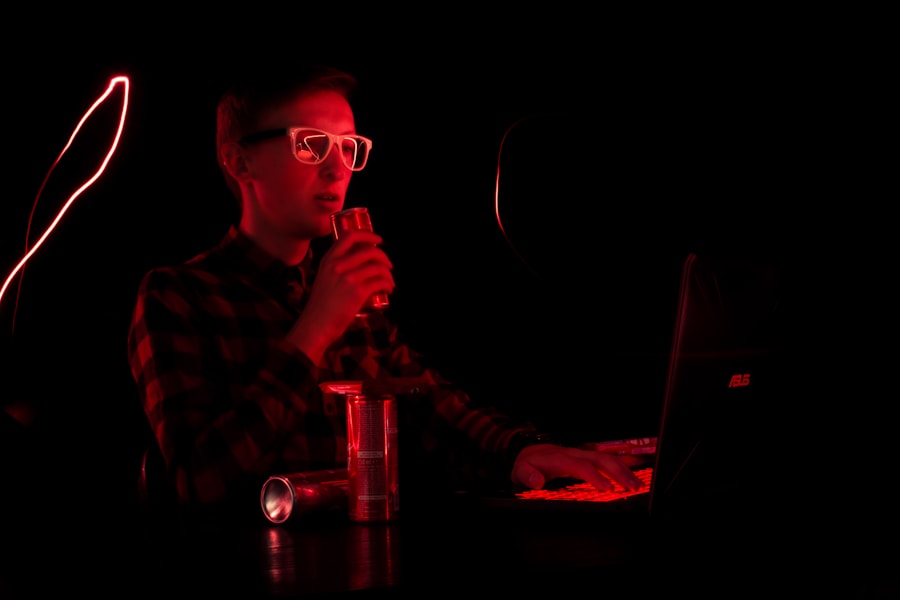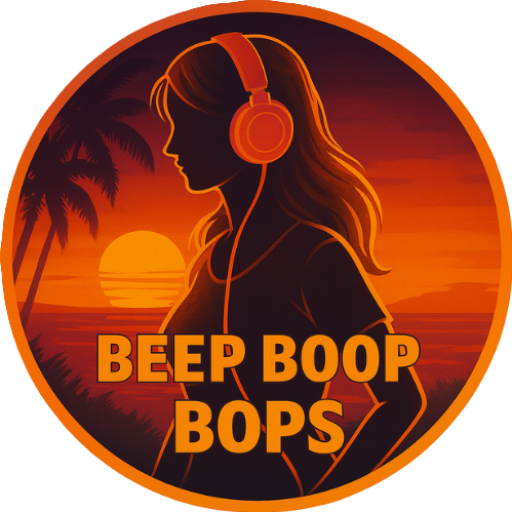In the ever-evolving landscape of digital media, music shorts have emerged as a captivating form of artistic expression. These brief yet impactful pieces combine the auditory allure of music with the visual storytelling of film, creating a unique experience that resonates with audiences. As I delve into the world of music shorts, I find myself fascinated by their ability to convey emotions and narratives in a condensed format.
The marriage of sound and visuals not only enhances the storytelling but also allows for a more profound connection with viewers, making it an exciting medium for both creators and audiences alike. The rise of platforms like TikTok and Instagram has further popularized music shorts, enabling artists to reach wider audiences in a matter of seconds. I often find myself scrolling through these platforms, captivated by the creativity and innovation displayed in these short clips.
The challenge lies in crafting a piece that is not only visually appealing but also musically engaging. As I embark on this journey of creating my own music short, I recognize the importance of understanding the various elements that contribute to its success. From selecting the right music to mastering the art of editing, each step plays a crucial role in bringing my vision to life.
Key Takeaways
- Music shorts are a powerful medium for storytelling and expression, combining music and visuals to create a compelling narrative.
- Choosing the right music is crucial for setting the tone and enhancing the emotional impact of your music short.
- Creating a compelling visual story involves careful planning and attention to detail, from storyboarding to shot composition.
- Utilizing sound design and effects can elevate the overall experience of your music short, adding depth and immersion.
- Understanding the importance of editing is essential for refining the pacing, rhythm, and overall flow of your music short.
Choosing the Right Music
Selecting the right music is perhaps one of the most critical aspects of creating a music short. The soundtrack serves as the backbone of the piece, setting the tone and mood for the visuals that accompany it. I often find myself contemplating how different genres can evoke distinct emotions; for instance, an upbeat pop track can create a sense of joy and energy, while a haunting melody might evoke feelings of nostalgia or melancholy.
As I sift through my options, I pay close attention to how each piece resonates with the story I want to tell. Moreover, I consider the pacing of the music in relation to the visuals. A fast-paced track may require quick cuts and dynamic visuals, while a slower piece might lend itself to more contemplative shots.
I’ve learned that the synergy between music and visuals can elevate a project from ordinary to extraordinary. It’s essential to choose a piece that not only complements my visuals but also enhances the overall narrative. As I explore various tracks, I often find inspiration in unexpected places, whether it’s an indie artist on SoundCloud or a classic tune that sparks a memory.
The right music can transform my vision into a compelling experience that resonates with viewers.
Creating a Compelling Visual Story

Once I have selected the perfect soundtrack, the next step is to craft a compelling visual story that aligns with the music. This process begins with brainstorming ideas and concepts that reflect the emotions conveyed by the chosen track. I often find myself jotting down notes and sketching out scenes that come to mind, allowing my creativity to flow freely.
The key is to create a narrative arc that captivates viewers from start to finish, even within the constraints of a short format. As I develop my visual story, I focus on character development and setting. Who are the characters in my piece?
What journey do they embark on? How does their story intertwine with the music? These questions guide my creative process as I strive to create relatable characters and engaging scenarios.
I also consider how visual elements such as color, composition, and movement can enhance the storytelling. By carefully curating each shot and ensuring it aligns with the rhythm and mood of the music, I aim to create a seamless blend of sound and visuals that captivates my audience.
Utilizing Sound Design and Effects
| Sound Design and Effects Metrics | 2019 | 2020 | 2021 |
|---|---|---|---|
| Number of Sound Design Projects | 25 | 30 | 35 |
| Percentage of Projects with Custom Sound Effects | 60% | 65% | 70% |
| Client Satisfaction Rating for Sound Design | 4.2 | 4.5 | 4.8 |
While music serves as the foundation of my project, sound design and effects play an equally vital role in enhancing the overall experience. I’ve come to appreciate how subtle sound elements can add depth and dimension to my music short. From ambient sounds that immerse viewers in a particular environment to sound effects that punctuate key moments, every auditory detail contributes to the storytelling.
Incorporating sound design requires careful consideration and creativity. I often experiment with layering different sounds to create a rich auditory landscape that complements the visuals. For instance, if my short features a bustling city scene, I might include sounds of traffic, chatter, and distant sirens to transport viewers into that world.
Additionally, I pay attention to how sound effects can emphasize specific actions or emotions within the narrative. A well-timed sound effect can heighten tension or evoke laughter, making it an essential tool in my storytelling arsenal.
Understanding the Importance of Editing
Editing is where all the elements of my music short come together, transforming raw footage into a polished final product. This stage is crucial for ensuring that my visuals align seamlessly with the music and sound design. As I dive into editing software, I often find myself immersed in the process, meticulously crafting each cut and transition to create a cohesive flow.
One of the key aspects I focus on during editing is pacing. The rhythm of my edits should mirror the tempo of the music, allowing for moments of tension and release that enhance the emotional impact of my piece. I experiment with different editing techniques, such as jump cuts or crossfades, to find what best serves my narrative.
Additionally, I pay close attention to continuity, ensuring that each shot transitions smoothly into the next while maintaining visual coherence. Through this meticulous process, I aim to create an engaging viewing experience that keeps audiences captivated from beginning to end.
Incorporating Creative Camera Work

Experimenting with Techniques
I often experiment with various techniques, such as tracking shots or handheld movements, to add dynamism and energy to my visuals. I also find inspiration in studying other filmmakers’ work, analyzing how they utilize camera angles and movements to convey emotion or narrative depth. This exploration encourages me to think outside the box and push creative boundaries in my own projects.
Pushing Creative Boundaries
Whether it’s employing slow-motion shots for dramatic effect or using unconventional angles for added intrigue, I strive to incorporate creative camera work that elevates my music short and captivates viewers.
Utilizing Lighting and Color Grading
Lighting plays a pivotal role in shaping the mood and atmosphere of my music short. As I plan each scene, I consider how different lighting setups can influence the emotional tone of my visuals. For instance, soft lighting can create a warm and inviting atmosphere, while harsh lighting may evoke tension or unease.
I often experiment with natural light sources or artificial lighting setups to achieve the desired effect. Color grading is another essential aspect that allows me to enhance the visual aesthetic of my project further. By adjusting colors and tones during post-production, I can create a cohesive look that aligns with the emotions conveyed by the music.
Whether it’s desaturating colors for a more somber feel or enhancing vibrancy for an upbeat vibe, color grading adds an extra layer of depth to my storytelling. Through careful consideration of lighting and color choices, I aim to create a visually stunning piece that resonates with viewers on multiple levels.
Finalizing and Distributing Your Music Short
As I approach the final stages of creating my music short, it’s time to focus on finalizing and distributing my work. This process involves reviewing every detail—ensuring that audio levels are balanced, transitions are smooth, and visuals are polished. It’s essential for me to take a step back and view my project from an audience’s perspective; this helps me identify any areas that may need refinement before sharing it with the world.
Once satisfied with my final product, I turn my attention to distribution strategies. In today’s digital age, there are numerous platforms available for sharing creative work—ranging from social media sites like Instagram and TikTok to video-sharing platforms like YouTube. Each platform has its unique audience and format requirements; therefore, I tailor my approach accordingly.
Engaging with viewers through comments and feedback is also crucial; it allows me to connect with my audience on a personal level while gaining insights for future projects. In conclusion, creating a music short is an intricate process that requires careful consideration of various elements—from choosing the right music to mastering editing techniques. Each step contributes to crafting a compelling narrative that resonates with viewers on an emotional level.
As I continue exploring this dynamic medium, I am excited about the endless possibilities for creativity and expression that lie ahead in my journey as a filmmaker.
When creating a good music short video, it is important to consider the visual elements that will complement the music and engage the audience. One helpful resource for inspiration and tips on creating visually appealing music videos is the blog section of BeepBoopBops website. In a recent article titled “10 Tips for Making a Memorable Music Video,” the author provides valuable insights on how to make a music video that stands out and captures the viewer’s attention. Check out the article here for more information on creating a successful music short video.
FAQs
What is a music short video?
A music short video is a brief video that typically features a snippet of a song or musical performance. It is often created for social media platforms and is designed to capture the viewer’s attention quickly.
What makes a good music short video?
A good music short video should have a strong visual concept that complements the music, engaging and dynamic editing, and a clear focus on the music itself. It should also be well-suited for the platform it will be shared on, with attention to factors such as aspect ratio and length.
How long should a music short video be?
Music short videos are typically quite short, often ranging from 15 seconds to 1 minute in length. The ideal length may vary depending on the platform and the specific goals of the video.
What are some key elements of a successful music short video?
Some key elements of a successful music short video include strong visual storytelling, creative and engaging editing, a clear connection between the visuals and the music, and a format that is well-suited for the platform it will be shared on.
How can music short videos be used for promotion?
Music short videos can be used for promotion by showcasing a new song or album, creating anticipation for an upcoming release, engaging with fans, and reaching new audiences through social media and other online platforms.



